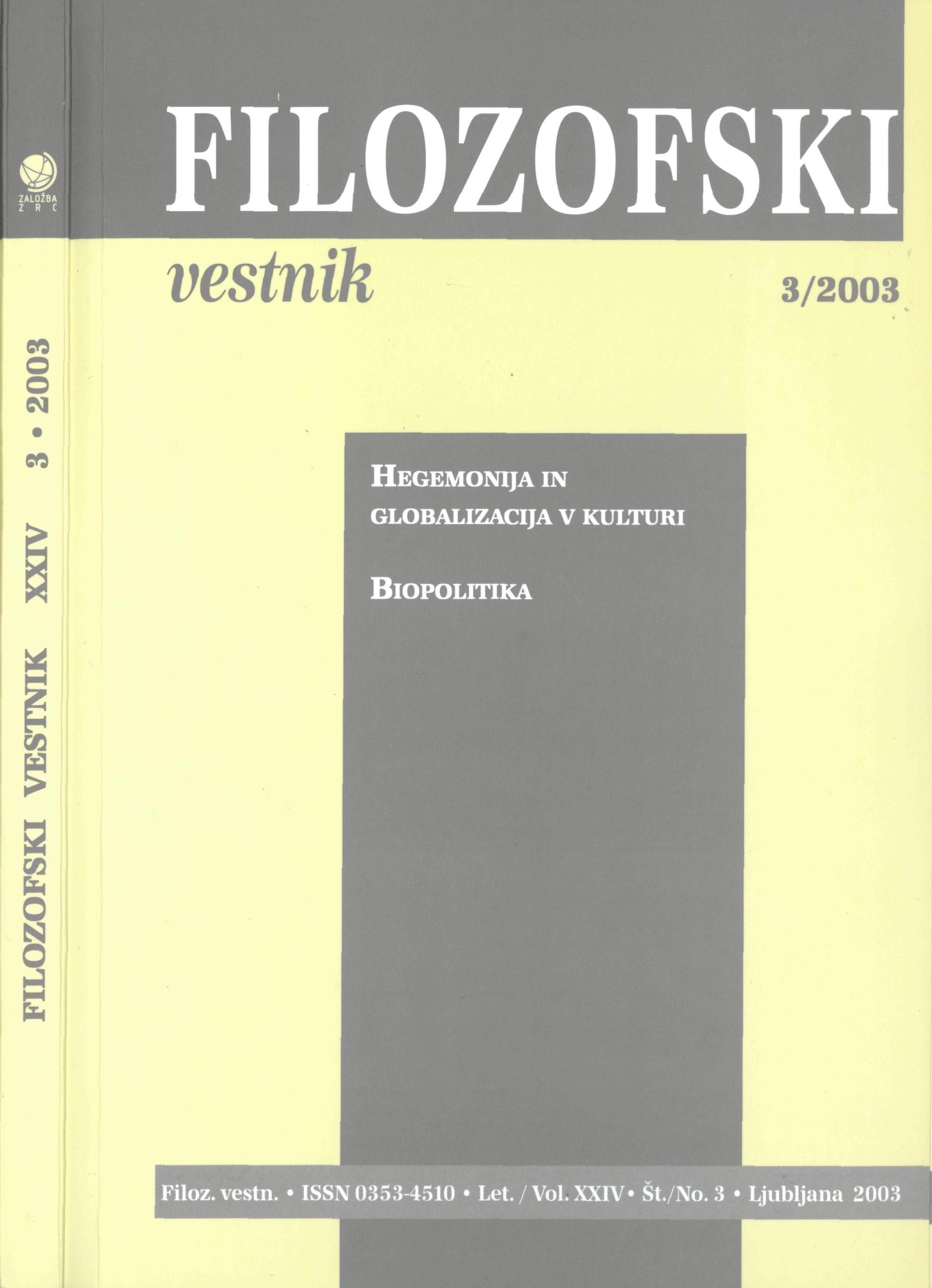Hegemonija v estetski teoriji
Ključne besede:
hegemonija, estetska teorija, GramsciPovzetek
Pojem hegemonije se pojavlja v delu Antonia Gramscija kot sredstvo, s katerim seje mogoče ogniti redukcionizmu, h kateremu so se nagibale »ekonomistične« verzije marksistične politične misli. Bolj sodobne različice marksizma - kot na primer teorija »interpelacije« Louisa Althusserja - modificirajo gramscijevski pojem hegemonije tako, da teoretizirajo sredstva, s katerimi ideološki aparati države (IAD) proizvajajo subjekte. A vsak poskus premakniti se od teorije države in oblikovanja subjektov na estetsko polje vseeno prinaša tveganje, da bi pojem »hegemonije« proizvedel prav tisto vrsto redukcionizma, ki se mu je Gramsci poskušal ogniti. Morda bi celo omejil sposobnost razložiti protihegemone elemente estetskega polja. Kako se tej omejitvi lahko ognemo? Kantov poziv k moči čutnih partikularnosti, ki se upira subsumiranju pod univerzalije, predstavlja izhodiščno točko za razmišljanje o protihegemonem potencialu umetnosti, čeprav je Kantov pojem smiseln samo, če je razvit tako, da (1) razloži ugodje in neugodje, ki sta povezana z izkušnjo teh partikularnosti, in (2) prepozna ugodje in neugodje kot točki, v katerih je subjekt odprt temu, česar ni mogoče določiti vnaprej. Ko se estetski subjekt loči od subjekta spoznanja (znanosti) in moralnosti (delovanja), si tako zasluži možnost zasesti protihegemono pozicijo. Kar zadeva estetsko »polje«, ne konstituira popolnoma oblikovanega področja, ki bi bilo čisto ločeno od znanosti in delovanja, ampak ponuja protipodobo logike, po kateri se zdita dominantna ali »hegemona«.Prenosi
Podatki o prenosih še niso na voljo.
Prenosi
Objavljeno
2016-01-03
Kako citirati
Cascardi, A. J. (2016). Hegemonija v estetski teoriji. Filozofski Vestnik, 24(3). Pridobljeno od https://ojs.zrc-sazu.si/filozofski-vestnik/article/view/3398
Številka
Rubrike
Hegemonija in globalizacija v kulturi
Licenca
Avtorji jamčijo, da je delo njihova avtorska stvaritev, da v njem niso kršene avtorske pravice tretjih oseb ali kake druge pravice. V primeru zahtevkov tretjih oseb se avtorji zavezujejo, da bodo varovali interese založnika ter da bodo povrnili morebitno škodo.
Podrobneje v rubriki: Prispevki





